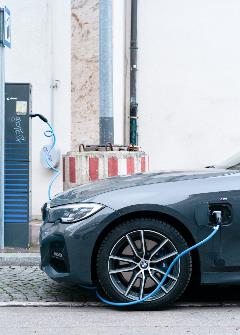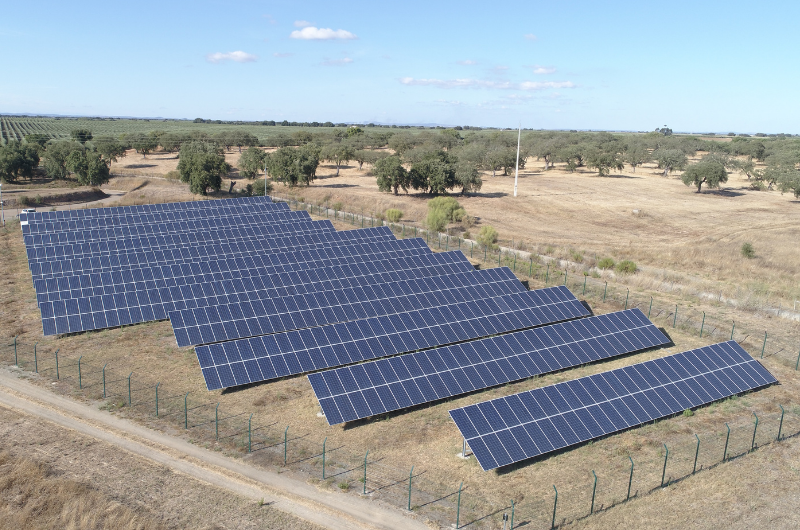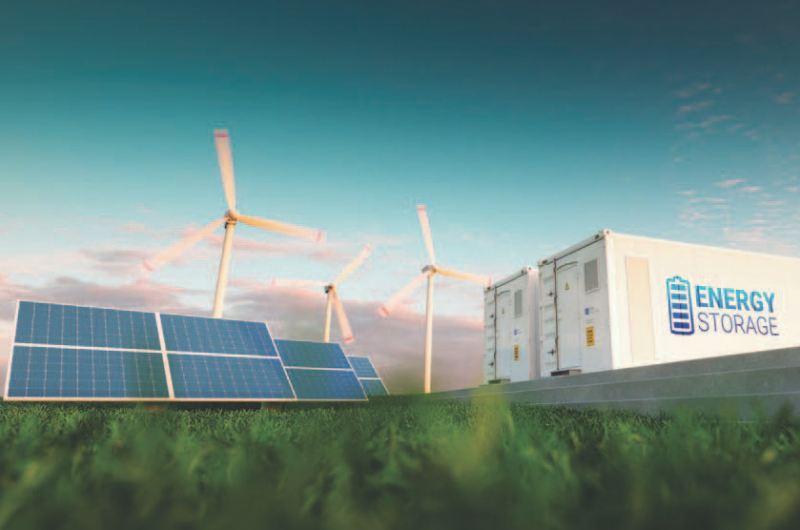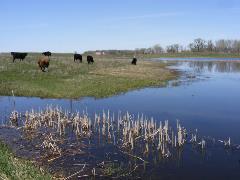Editor’s note: This is the second in a series of short articles about various aspects of climate change. No single article is designed to address this topic in its totality nor is “Outdoor America” attempting to cover every conceivable climate-related issue. The goals of the series are to communicate the fundamental facts and address issues most relevant to the League’s mission.
Climate change is a proven threat to our health, natural resources, economy and way of life. This threat grows larger as we wait to address it in an adequate manner, while the window to effectively do so is rapidly closing. Like many conservation challenges that have been successfully addressed, this issue will require a policy response from our elected officials. Federal, state and local governments and private industry all have roles to play in reducing carbon emissions and mitigating the most immediate impacts of climate change.
As we have on many challenging conservation issues in the past century, the League must step forward to shape the policies and participate in this debate. Our members have adopted conservation policies in several areas that give the League the tools to advocate for near-term and effective actions to fight the results of climate change today. Find specific information on the League’s conservation policies.
Following are some of the solutions available to reduce the emission of greenhouse gases and mitigate some of the most catastrophic effects of climate change. By focusing on areas where League members have adopted conservation policies, we have narrowed the scope of this article to three issues: energy efficiency, development of renewable energy resources and carbon sequestration.
Energy Efficiency
How Does It Work?

Using energy more efficiently is one of the simplest ways to reduce emission of greenhouse gases. Energy efficiency is not the same as energy conservation. Efficiency is harnessing technology that uses less energy to perform the same task. Conservation means reducing the amount of energy used by reducing the tasks accomplished with that energy. An example of energy conservation would be turning off the lights for part of the day.
Most of us are familiar with technologies that have made our everyday lives more energy efficient. LED lightbulbs provide the same amount of light for our homes as older bulbs at a fraction of the energy usage. Building insulation, especially more insulated windows, have made maintaining comfortable indoor temperatures much more efficient by allowing cool or warm air to remain trapped, requiring less energy to run our heating and cooling systems. Finally, we have all become accustomed to vehicles that can travel much further on one gallon of gasoline than previous generations. We are performing the same task, driving from home to our office, but are using less energy (gas) because our automobile’s technology has reduced the amount needed.
What Can We Gain?
According to the 2019 Energy Efficiency Impact Report, produced by leaders in the energy efficiency field, investments in efficiency since 1980 have prevented a 60 percent increase in energy consumption. Without gains in efficiency, our consumption of energy, and resulting carbon emissions from burning fossil fuels, would be much higher. Looking to the future, the United States could slash its carbon emissions nearly in half by 2050. This can be done, according to a study by the American Council for an Energy Efficient Economy (ACEEE), by continuing to dramatically increase energy efficiency in three sectors: vehicles, housing and industries like manufacturing. A 50 percent reduction in emissions would get the United States halfway to the emission goals scientists say are needed to prevent the worst consequences of climate change.
In addition to the emissions benefits needed to fight a changing climate, increasing energy efficiency can help Americans save money. The ACEEE estimates that by dramatically increasing energy efficiency, consumers, businesses and government could save more than $700 billion in energy costs by 2050.
How Do We Get There?
League policy clearly calls for maximum efficiency of energy use to drastically reduce dependence on fossil fuels. These policies call on uniform building codes, higher fuel standards for automobiles, and other efficiency programs. Despite reductions in energy waste and carbon pollution that have come from increased energy efficiency, investment in energy efficiency technology is down almost 20 percent since 2016, a startling drop that must be quickly reversed. While the private sector has an undeniable role to play in such a reversal, the U.S. Department of Energy (DOE) must lead by prioritizing investments with concrete goals. Fortunately, DOE has committed to driving cost savings from efficiency gains up by 25-50 percent between now and 2030 through directed research and support for development and implementation of commercial and residential building codes.
To really unlock the capabilities of energy efficiency, it must be applied across all sectors of the economy, which is represented in the League’s conservation policies. Our members have called for uniform building codes that prioritize certifications of efficiency and increasing fuel economy standards in all vehicles. Fuel standards for cars and light trucks, appliance standards and utility programs that offer cash savings to homes and businesses utilizing energy efficient products and services make up a third of potential energy efficiency savings. DOE has a goal of preventing at least 3 billion metric tons of carbon pollution by 2030 by instituting more efficient standards for appliances like washing machines and dryers. Additionally, DOE is aiming to reduce energy use per square foot in all U.S. buildings by 30 percent by 2030.
Still, market mechanisms, like tax incentives for consumers buying energy efficient vehicles or businesses reducing energy waste in the manufacturing process, will need to be crafted by policymakers. Larger policy goals aimed at reducing and eliminating emissions to fight climate change and building a clean energy economy must prioritize energy efficiency as a critical step.

Renewable Energy Development
How Does It Work?
In order to combat the climate crisis, the U.S. and other countries will have to transition to clean energy sources. By dramatically curtailing carbon-based fuel sources (such as coal, oil or natural gas), generating electricity will contribute substantially less to climate change. By harnessing carbon-free energy sources (like sun or wind) to generate electricity, we can eliminate a huge percentage of our carbon pollution, as well as enjoy renewable sources of power.
However, there are some barriers that must be addressed to fully utilize renewable energy sources.
Traditional sources of power are relatively centralized, that is, power plants that rely on coal or natural gas are relatively few and feed a large, widely dispersed network of electricity consumers. Renewable sources of power, especially wind and solar, offer a decentralized model. In this model, smaller generating stations are spread across a larger landscape. However, this decentralized model encounters a couple of barriers to achieving the goal of generating most electricity from clean sources: siting and transmission.
By harnessing carbon-free energy sources (like sun or wind) to generate electricity, we can eliminate a huge percentage of our carbon pollution, as well as enjoy renewable sources of power.
Siting is the need to locate energy generators like solar panels or wind turbines. Placing this infrastructure requires study of local conditions, negotiations, permits and outreach to local communities. A spread-out network requires more of these siting concerns to be dealt with than a few centralized coal or natural gas burning power plants. Moreover, this siting process must assess impacts rarely assessed in the past, including impacts on wildlife, other natural resources, public land access and communities that have historically borne the brunt of industrial development. League members specifically highlighted the need for more comprehensive siting decisions when adopting policy endorsing expanded development of renewable energy generation while mitigating impacts on birds, bats and other wildlife. Siting done right costs more in the near term but pays dividends in the long run.
Transmission costs refers to the need to transfer power from the source of its generation to the customer that consumes it. We think of transmission infrastructure as the power lines and other structures that are required to move electricity from a power generating plant to our homes. But most of the transmission infrastructure that exists today was built to serve large plants constructed in proximity to population centers.
Most wind and solar power generating facilities are more remotely located. Moreover, many of the sites best suited for large-scale wind and solar development that are reasonably close to major population centers and existing transmission infrastructure, as a trip through much of the Midwest and southern California so visually demonstrates, have already been developed. To significantly expand renewable electricity generation, new transmission infrastructure is needed to carry electricity from future generating stations to our homes. But new transmission infrastructure costs money, and needs to be sited, subject to the same challenges associated with siting generating sources previously discussed. These burdens can add up to significant impediments to developers, even if they are eager to generate renewable energy to provide electricity for consumers.
What Can We Gain?
The largest gain from a switch to renewable energy sources for electricity generation is a dramatic reduction in carbon pollution, which, in turn, reduces the risk of catastrophic climate change. In fact, almost 30 percent of all carbon pollution today comes from electricity generation. Replacing just 25 percent of carbon-based fuels for generation of electric power with renewable energy sources could prevent 277 million metric tons of carbon from reaching our atmosphere, according to the Union of Concerned Scientists. However, to limit climate change’s worst impacts, scientists tell us we will have to transition to net zero emissions by mid-century.
 Improvements in the efficiency of utility-scale storage batteries have made renewable energy sources more competitive and reliable as replacements for traditional power plants.
Improvements in the efficiency of utility-scale storage batteries have made renewable energy sources more competitive and reliable as replacements for traditional power plants.
How Do We Get There?
According to the Intergovernmental Panel on Climate Change, in order to avoid the most disastrous consequences of global climate change, the world will need to reduce its carbon emissions by about 45 percent of 2010 emissions levels in the next 10 years. In recognition of the substantial role that electricity production from fossil fuels plays in contributing to carbon emissions, the League’s members have voted to support a goal of sourcing 100 percent of energy production from renewable sources. Even more recently, the League has recognized the urgency needed for development and deployment of renewable sources by passing resolutions calling on members and chapters to switch to sustainable energy and for easier integration of solar generation capabilities in homes.
The U.S. needs to develop policies that guide industry to transition to renewable energy (and reduce greenhouse gas emissions). Subsidies that artificially lower the costs of producing and distributing power from traditional sources must be eliminated. Placing ever-decreasing caps or increasing prices on carbon emissions will significantly increase production of renewable energy, while decreasing water and air pollution associated with burning coal, oil and natural gas.
Policymakers must prioritize and incentivize development of a modern transmission grid that includes adequate storage capacity to satisfy demand at any given time. The grid used to distribute electricity today is antiquated and based on models of carrying electricity from source to user designed nearly 100 years ago. DOE’s Grid Modernization Initiative works with public and private partners to develop concepts, tools and technologies needed to design the grid of the future. Policymakers need to prioritize efforts like these with adequate funding so that properly sited development of renewable energy sources can happen and a modern grid system can carry new power from those sources as soon as they come online. Additionally, lawmakers and regulators could ease burdens for homeowners that produce their own electricity from renewable sources like solar panels, as called for in League policies on net metering and the wider adoption of solar power.
 Rye cover crop on Steele Farm in Washington County, Iowa.
Rye cover crop on Steele Farm in Washington County, Iowa.
Carbon Sequestration
How Does It Work?
Carbon sequestration is the process of capturing and storing atmospheric carbon dioxide. By storing carbon dioxide in soil or other natural carbon sinks, we can reduce the amount of carbon dioxide in the atmosphere and lessen the impacts of climate change. Healthy soils contain large quantities of organic matter, which stores carbon. By rebuilding soil health where it has become depleted due to development or agriculture, we can sequester carbon in our soils and keep it out of the atmosphere.
Several strategies exist to restore soil health on agricultural lands, which account for about 40 percent of the surface area of the U.S. Practices such as no-till farming, planting cover crops, planting grass and forested buffer strips around fields, and rotational grazing all help improve soil health and sequester carbon. Wetlands, which can store 90-240 tons of carbon per acre, are another vast carbon sink. Although wetlands only occupy 5-8 percent of Earth’s surface, they store 20-30 percent of carbon in all the planet’s soils. This shows that wetlands can be incredible reservoirs of carbon sequestration, but in just the U.S., more than half of the wetlands that existed at the time of European contact have disappeared.
What Can We Gain?
Based on the amount of carbon that can be sequestered in healthy soils and the agricultural lands in the U.S., there is vast potential to help mitigate climate change by expanding soil health practices across the landscape. Between 2006 and 2018, these practices, applied across just 2 million acres of farmland, are estimated to have delivered an equivalent emissions reduction of more than 6 million metric tons of greenhouse gases. If these practices and their benefits were applied across just a quarter of all 900 million acres of U.S. farmland, that would drive an emissions reduction of nearly 149 million tons of greenhouse gasses annually, the rough equivalent of taking 31.5 million vehicles off the road every year.
 A farm with no-till corn protects the Chesapeake Bay.
A farm with no-till corn protects the Chesapeake Bay.
How Do We Get There?
League policy calls for the education of farmers and other landowners about techniques to improve the carbon content of soils and advocate for practices that implement those techniques. Soil health has long been a priority of the League, but we are now recognizing how effective healthy soil can be at sequestering carbon. In order to increase adoption of soil health practices and sequester enough carbon to affect climate change, Congress needs to increase support for the U.S. Department of Agriculture (USDA) programs that help farmers adopt soil health practices. Many of the Farm Bill’s conservation programs contain incentives for farmers and landowners to adopt practices that build soil health, but there’s not enough funding to support widespread adoption across much more of the agricultural landscape. Congress should enable USDA to “go big” on soil health practices by boosting funding for conservation programs that can make a difference on the landscape level.
Congress also should be compelled to address federal crop insurance subsidies so that American taxpayers are investing in improved soil health. First, a program known as conservation compliance must be strengthened. This program requires farmers receiving crop insurance subsidies to follow a simple set of rules designed to protect highly erodible soil and wetlands. It should be strengthened to include a soil health plan for every farm that would establish a roadmap for unlocking the full sequestration capabilities of every acre. Congress should also reform the federal crop insurance program to include the League’s “good farmer discount.” The League’s discount would reduce the crop insurance payments of farmers that have fully implemented soil health practices on their lands.

Across the U.S., wetlands are being drained at alarming rates, so Congress must ensure that federal Clean Water Act protections for wetlands are not diminished. Unfortunately, the Environmental Protection Agency has removed those protections for half of the remaining wetlands in the country. This agency action must be reversed and then Congress must act to adequately protect all wetlands by clarifying the Clean Water Act so that its language is clear: all natural wetlands are protected under the Clean Water Act. Over many years, League members have adopted extensive policies calling for the protection and restoration of wetlands across the country.
Enough carbon and other greenhouse gases are already trapped in our atmosphere to trigger changes to our climate. But, we still have time to avoid the worst consequences of climate change that would flood our coasts, drive intense food shortages across the world and completely disrupt normal weather patterns. However, that window is closing. All methods of reducing our emissions and storing carbon must be on the table. We can dramatically reduce our carbon footprint as a nation without sacrificing a healthy economy by investing in the solutions discussed here. League member-adopted policy will provide a foundation for our advocacy efforts as we work with Congress, state and local governments, and our own chapters and League leaders to address the climate crisis. Our mission calls on all Ikes to leave a healthy outdoor America for future generations, so our success in this endeavor is imperative.
Learn more and urge Congress to support important legislation